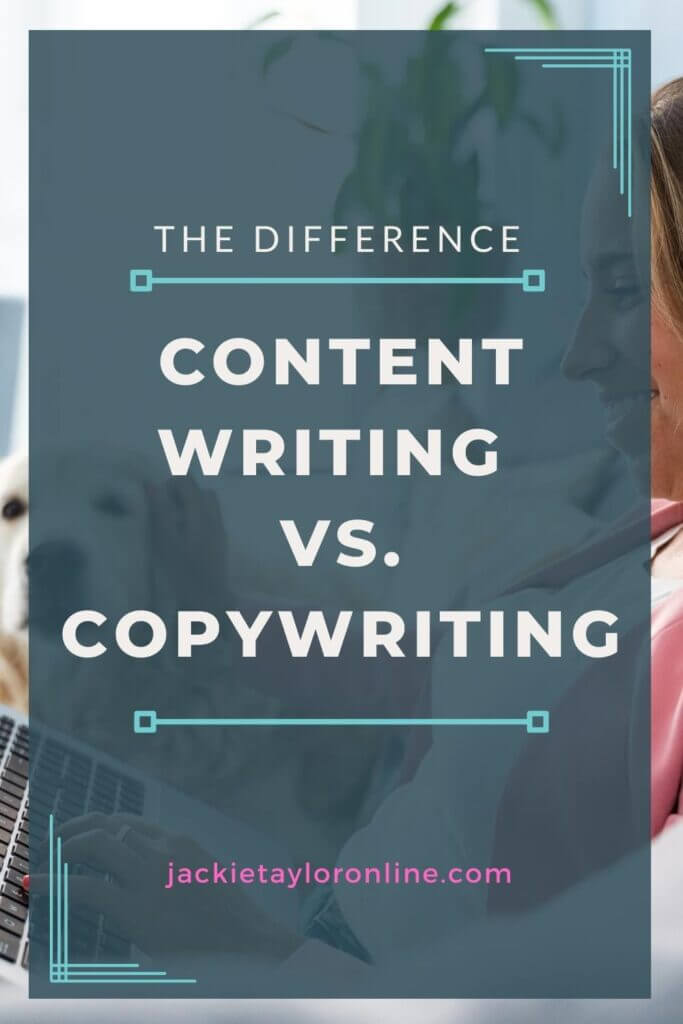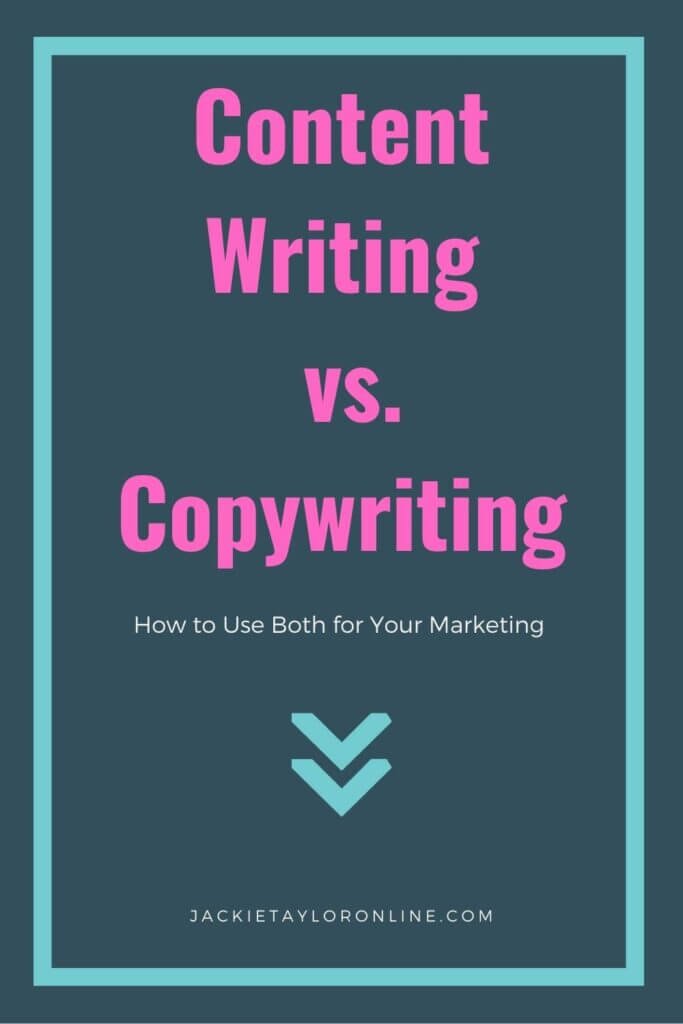With an insane amount of content available online, how do you make sure your message stands out? How can you actually connect with your target audience? Or even get them to read your content, instead of just scrolling right by?
This is where the secret lies: understanding the power of content writing vs copywriting. By mastering these two different, yet somewhat similar writing types you’ll start to write better. Creating a more effective content creation process.
The more you understand the concept of each. Or the reason behind when or why to use content writing or copywriting, the better you’ll be able to execute.
Your digital marketing will start to work. You’ll get more engagement from your audience. And you’ll start to see your audience grow. It’s the best feeling in the world when things actually start to work.
Read this article. By the end, you’ll have a clear understanding of the difference between content writing vs copywriting. And all the advantages of each. So you’ll be able to strike the perfect balance between the two types of online writing styles. All so you can start implementing these changes today.
AFFILIATE DISCLAIMER: I SOMETIMES LINK TO PRODUCTS AND SERVICES TO HELP COVER THE COSTS OF RUNNING THIS BLOG. THERE’S NO EXTRA COST TO YOU – AND I ONLY RECOMMEND PRODUCTS THAT I’VE BOTH USED PERSONALLY AND THINK ARE QUALITY PRODUCTS THAT HELP WITH EFFICIENCY. PLEASE READ MY AFFILIATE DISCLOSURE FOR MORE INFORMATION. THANKS FOR YOUR SUPPORT!
Table of Contents
- What is Content Writing?
- What is Copywriting?
- Content writing vs Copywriting Purpose and Intent
- How does content writing and copywriting work together?
- Tailoring Your Writing Style for Maximum Impact
- Content Writing Vs Copywriting Breaking Down the Differences
What is Content Writing?
Content writing vs copywriting, when should you use each one? Does it matter? YES!
Content writing is vital to any successful marketing strategy, as it focuses on creating informative, valuable, and engaging content that appeals to a specific target audience. Instead of directly selling a product or service, content writing aims to educate, inspire, entertain, or specifically solve problems for your reader.
The primary goal of content writing is to provide value to your audience by delivering relevant and useful information. This can be in the form of blog posts, podcast episodes, YouTube videos, reels, or any other type of traditional social media content and non-traditional content.
The emphasis is on building a strong connection with your reader, establishing trust, and positioning yourself or your brand as an authority in your industry.
This is a big piece of how you build your overall brand image.
Content writing also involves extensive research to gather accurate information and present it in a clear and concise manner.
It requires a deep understanding of your target audience’s needs, interests, and pain points, so that the content can address those directly.
By providing valuable information, answering specific questions, and solving their actual problems, your content will establish a meaningful and long-lasting relationship with your following. Your ideal buyers.
In addition to being informative, content writing also focuses on being engaging and compelling.
It utilizes storytelling techniques, evokes emotions, and incorporates a conversational tone to captivate the reader’s attention.
Content Writing Tips for Beginners
Content writing should aim to:
- Take complex processes and information and make it simple and easy to understand
- Be visually appealing (think infographics, carousels, images breaking up text)
- Optimized for search engines (to ensure maximum visibility)
- Tell stories and evoke emotion
One of the key aspects of content writing is its focus on providing value over promotion. While copywriting is more sales-driven and highlights the benefits and features of a product or service, content writing seeks to educate and entertain.
However, this doesn’t mean that content writing can’t lead to conversions. By showcasing your expertise and building trust with your audience, you can effectively guide them towards taking action and becoming customers.
To be a good content writer, you need to be a good storyteller. Get good at taking complex processes and information and making it simple and easy to understand.
You need to be sociable and engaging. It isn’t just creating and posting your content, it’s also engaging with the comments on your content and even others’ posts as well.
And don’t forget to simply ask your audience what they want to know or learn. Be engaging by creating content that’s tailored to your audience and meets them where they’re at in the process.
Now that you have a clear understanding of what content writing is, let’s look at copywriting so you can compare the two.
Pin it on Pinterest!

What is Copywriting?
Copywriting, in essence, is the art of persuasive writing aimed at driving specific actions or responses from your followers. It’s a strategic and intentional form of writing that typically incorporates elements of buyer psychology, storytelling, and compelling language.
In copywriting, the primary objective is to persuade the reader to take a desired action, such as making a purchase, signing up for a newsletter, or contacting you for more information.
When you’re comparing content writing to copywriting, think of this copywriting generates sales or leads. That’s the main focus of copywriting. For your audience to take a desired action.
Copywriters understand the power of words and know how to craft compelling messages that resonate with their target audience. It’s fun and entertaining. But also feels like the words are being pulled right out of the readers mind. It requires lots of audience knowledge, so good market research.
Unlike content writing, which is more focused on delivering information and building long-term relationships, copywriting is designed to elicit an immediate action.
List of Persuasive Writing Techniques
Copywriting often relies on persuasive writing techniques such as:
- Creating a sense of urgency
- Appealing to your emotions
- Highlighting the unique selling points of a product or service
- Social proof (testimonials & reviews)
- Objection busters
- Popular Copywriting frameworks
- Clear and concise calls to action
Copywriting can take various forms, including advertisements, sales pages, email marketing campaigns, and landing page copy. It requires a deep understanding of your target audience, their pain points, and motivations. It also requires the ability to communicate the benefits AND the value of a product or service.
While content writing and copywriting serve different purposes, they are both crucial components of a comprehensive marketing strategy.
In the next section, we will dive deeper into the distinctions between content writing and copywriting, exploring the unique characteristics of each and how they complement each other.
Related Article: 5 Copywriting Frameworks to Electrify Your Content
Content writing vs Copywriting Purpose and Intent
Content writing vs copywriting, which is better? Honestly, they’re generally confused with each other quite often. Regularly seen as the same thing. In reality, they’re very different.
The main difference between copywriting and content writing is your goal.
The Goal of Content Writing
Content writing lays the foundation by building trust and providing valuable information, while copywriting drives conversions and prompts immediate action.
When it comes to content writing, the primary goal is to educate, entertain, and engage your audience.
It involves producing high-quality articles, blog posts, social media updates, and more to establish a brand’s authority and credibility. Content writing is all about providing valuable, informative, and entertaining content that resonates with the target audience.
Content writing focuses on building relationships, capturing attention, and keeping readers coming back for more.
The Goal of Copywriting
On the other hand, copywriting is centered around persuasion and driving specific actions. Its main focus is on converting prospects into customers and driving revenue.
To be good at copywriting, you need to understand online buyer behavior and psychology. Understand your target audience’s goals, desires, fears, wants, frustrations, all of which can be accomplished with a good market research framework.
It’s the backbone of your content and your business overall. You take what you learn in your market research to create stories.
You’ve probably heard that stories sell. That’s because stories evoke emotion. Emotion is what sells.
People aren’t buying a product or service, they’re buying a feeling. How that product makes them feel. You buy a new dress not simply because it’s a dress, but because of how it makes you feel when you wear it. That feeling is what you’re really selling.
If you’re a homesteader teaching others how to can and preserve food, you’re selling the feeling of being self-sufficient and healthy with homemade food. It’s a feeling you’re selling, so you need stories to sell it.
Copywriting involves crafting persuasive headlines, engaging product descriptions, persuasive sales copy, and attention-grabbing advertisements.
6 Weapons of Influence
What you’re really doing with both of these writing styles is influencing your audience. If you want to be a master at influence, then you need to look at Robert Calidiani’s 6 weapons of influence:
1. social proof
2. authority
3. urgency
4. liking
5. consistency
6. reciprocity
Related Article: 6 Principles of Influence: Become a Persuasion Powerhouse
In the next section, we will go into content writing vs copywriting: how they complement each other.
How does content writing and copywriting work together?
While content writing and copywriting may have different goals and approaches, they are not mutually exclusive.
In fact, they work together harmoniously to create a strong and effective marketing strategy. Content writing sets the foundation by providing valuable information, establishing trust, and building a rapport with your audience. On the other hand, copywriting takes that foundation and amplifies it by capturing attention, provoking emotions, and ultimately driving the desired action.
Content writing serves as the backbone of any digital marketing strategy.
By creating high-quality content, you can position yourself as an authority in your industry, and build trust with your audience. Content writing ultimately helps you establish a long-term relationship with your target audience by fostering loyalty and increasing the chances of conversion down the road.
While content writing provides the substance, copywriting adds the spice.
By combining content writing and copywriting, you create a powerful marketing strategy that captures the attention of your audience, engages them with valuable content, and motivates them to take a desired action.
Together, they form a cohesive and comprehensive approach that captivates your audience and drives real results. Meaning you’ll make sales and create a successful marketing strategy and a successful business.
In the next section, we will go further into how you can tailor your writing style for maximum impact. We’ll explore how you can captivate your audience and drive results through your words alone, even if you hate writing.
Tailoring Your Writing Style for Maximum Impact
To truly captivate your audience and leave a lasting impression, it’s important to tailor your writing style for maximum impact. This means going beyond simply providing information and tapping into the emotions and desires of your readers.
Topics for Market Research
Accelerate your online audience growth with research. Market research is the back bone of any marketing strategy.
When you create your marketing strategy or your content strategy, you need to research your ideal buyers. Find out where they hang out online, what they like and dislike, and what they’re willing to spend their disposable income on.
By understanding what motivates and resonates with your audience, you can create content and copy that truly speaks to them on a deeper level.
It’s how your digital marketing will instantly resonate with your ideal buyers.
If you can create content and copy for your sales pages that instantly resonates with your audience, you’re halfway to making an actual sale. That’s the power of market research. That’s how you create content that attracts and converts easier.
And market research is how you avoid ruining your mindset by posting the wrong content and hearing crickets. Boost your business and your mindset by doing a little bit of research first.
Related Article: Customer Research Methods
The Power of Storytelling
One key aspect of tailoring your writing style is understanding the power of storytelling. People connect with stories on a primal level, and incorporating storytelling techniques into your writing can help you engage your audience and make your message more memorable.
According to Tony Robbins, “If done well and done correctly, the power of a great story can have a massive effect on the audience and define you as an influencer. It can inspire, enliven and create instant rapport. It can move an audience to take action and it can change lives.”
Whether you’re writing content or copy, incorporating personal anecdotes or testimonials can bring your words to life and make them resonate with your readers.
Related Article: The Power of Storytelling in Content Marketing
Persuasive Language
Another important element to consider when tailoring your writing style is the use of persuasive language.
Copywriting, in particular, requires the ability to sell an idea, product, or service. This means infusing your writing with words and phrases that evoke emotions, create desire, and inspire action.
Use strong, active verbs and vivid, sensory language to paint a picture in your readers’ minds and make your writing more compelling.
Clear Calls to Action
Finally, a clear call to action is essential for both content writing and copywriting.
Whether you want your readers to make a purchase, sign up for a newsletter, or share your content, you need to clearly and explicitly tell them what you want them to do next.
Be direct and specific, and make it easy for your readers to take the desired action.
By tailoring your writing style to incorporate these techniques, you can maximize the impact of your content and copy. Remember, it’s not just about providing information or making a sale—it’s about connecting with your audience, inspiring them, and motivating them to take action.
Related Article: Types of CTAs: A Beginner’s Guide
Pin it on Pinterest!

Content Writing Vs Copywriting Breaking Down the Differences
By comparing content writing vs copywriting, you understand when to use each one. And you’ll be able to combine the power of both when possible.
You’ll create a writing style that maximizes impact in all of your content marketing. Don’t hesitate to experiment, so you can refine your content and create the perfect balance. And always allow your words to make those strong connections with your target audience. Lean into their emotions.
Begin implementing these strategies today. You’ll start igniting curiosity and driving real results in your online business.
Where to next? Be sure to check out: 6 Principles of Influence: Become a Persuasion Powerhouse.
You’ll learn Robert Cialdini’s 6 principles of persuasion. Learn why they’re important to your small business, and how you can start using them today. Or find Cialdini’s Audiobook on Amazon.




+ show Comments
- Hide Comments
add a comment